Bokksu Travel Series: What to do in Kamakura?
With no shortage of historic marvels, Kamakura is a great place to explore Japan’s ancient religious and political history. Read our guide to learn the best places to visit, food to eat, and things to do in Kamakura.
Introduction to Kamakura:

The city of Kamakura (Kamakura-shi) is located in the Kanagawa Prefecture of Japan. It’s a major part of the Kanto region of Honshu Island and a nearby southern neighbor to Tokyo, another city in the Kanto region. In fact, a train ride between Kamakura and central Tokyo takes less than an hour.
Kamakura was one of the ancient capitals of Japan and a seat of power for the feudal shogunate between 1185 and 1333. It’s known as the location that birthed Japan’s first samurai government. However, Kamakura didn’t gain the status of a city until 1939.
Today, Kamakura no longer has the same political impact it used to have in the past but has been reinvented into a major tourist destination. It’s famous for having an abundance of historic temples and shrines, scenic beaches, hiking trails, and gourmet cuisine. All of these attractions and more will be the main focus of this guide. Enjoy!
Getting to Kamakura:
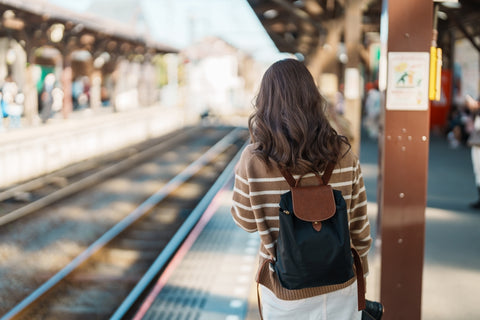
If you’re in Tokyo or any of the other nearby cities and towns, we’re here to help you find the best transportation options to Kamakura.
Tokyo has the highest number of possible train routes to Kamakura. The fastest one is the JR Yokosuka Line. Take a direct train ride from Tokyo Station to Kamakura Station. The one-way trip lasts for approximately 60 minutes. From Kamakura Station, you can use buses or taxis to get to your accommodations or attractions. An alternative route is the JR Shonan Shinjuku Line, which connects Shinjuku Station to Kamakura Station. You could also start at Shibuya Station and take the Tokyo Line to Yokohama Station before changing to the JR Yokosuka Line. Check out the fastest ways to get to Kamakura from other places below.
-
Yokohama: Take a 30-minute trip along the JR Yokosuka Line, from Yokohama Station to Kamakura Station.
-
Chiba: Begin at Narita Airport in Chiba and head to Nippori Station on the Keisei Skyliner. Trains on the Yamanote Line pass there often, so you can easily transfer to one of them and stop at Shimbashi Station. From there, transfer to another train on the Yokosuka Line and head to Kamakura Station. The entire trip should take about 2 hours.
-
Osaka: Hop on the Tokaido Shinkansen (Japanese bullet train) at Shin-Osaka Station and stop at Shinagawa Station, where you can transfer to the Yokosuka Line until your final destination at Kamakura Station. This trip could take about 3.5 hours.
-
Kyoto: Take the Tokaido Shinkansen from Kyoto Station to Shinagawa Station and transfer to the Yokosuka Line on its way to Kamakura Station. The trip takes just over 3 hours.
-
Kanazawa: Due to the large distance you need to cover, the trip takes approximately 4 hours. Use Hokuriku Shinkansen from Kanazawa Station to Tokyo Station. Once there, it’s a one-way ride to Kamakura via the JR Yokosuka Line.
-
Nagano: From Nagano Station, head to Tokyo Station on the Hokuriku Shinkansen and transfer to the Yokosuka Line on the way to Kamakura. It takes just less than 3 hours.
-
Hakone: The town is close to Kamakura, so all you need to get there is a 70-minute train ride: from Hakone-Yumoto Station to Odawara Station using the Hakone Tozan Line, then to Ofuna Station via the Tokaido Line, and finally to Kamakura taking the Yokosuka Line.
-
Nagoya: Follow the Tokaido Shinkansen from Nagoya Station to Odawara Station, where you can transfer to the Tokaido Local Line on its way to Ofuna Station. Transfer from Ofuna to a train on the Yokosuka Line and stop in Kamakura.
Kamakura's Rich History

Kamakura has one of the most fascinating histories of any Japanese city. Evidence suggests that the city has been around since the 8th century, when it was mostly made up of Buddhist temples and shrines. In 1192, Minamoto Yoritomo turned Kamakura into the headquarters of the Kamakura shogunate, the first military government in Japan. This marked the beginning of the Kamakura period, an era when the city’s shogunate ruled most of Japan. At the shogunate's peak, many Zen temples and shrines dedicated to the deities were established in Kamakura, and the city served as a capital for the rest of the country. The Shogunate's Kamakura government lasted for over a century until its fall in 1333. Imperial rule was reestablished after the downfall of the Shogunate.
The Edo era of 1603–1867 saw the city become a massive tourist destination, thanks to its different temples and shrines. Marvels like the Sugimoto-dera and Kōtoku-in were popular attractions for both members and non-members of the Buddhist and Shinto religions.
Must-Visit Temples
There are about 65 different temples in Kamakura. Let’s explore the most famous ones and their cultural significance.
Kotoku-in Temple: The Kotoku-in temple is as old as Kamakura itself, if not older. The temple has become the unofficial symbol of the city. Its main attraction is Japan’s second-largest Buddha statue, which sits in the compound of the temple. The Daibutsu, as it’s called, is green now but used to be a golden statue. Kotoku-in is considered the birthplace of Nichiren Buddhism and Rinzai Zen Buddhism.
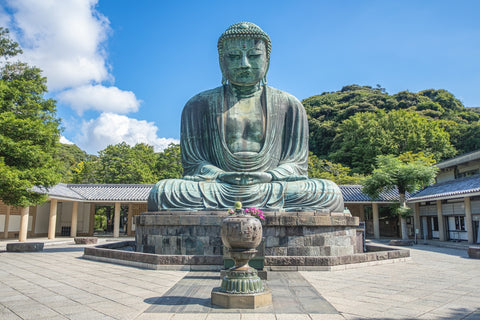
Hokokuji Temple: Also known as the Bamboo Temple, Hokokuji has come a long way since it served as a sanctuary for the Ashikaga warrior clan. Today, it’s a peaceful and calm temple famous for its beautiful bamboo grove.
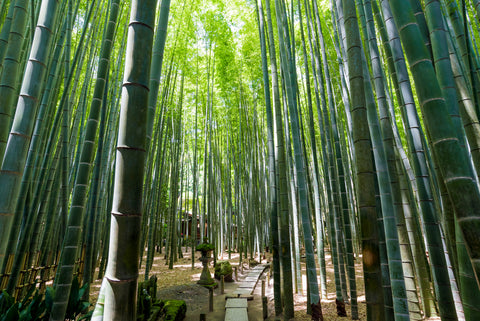
Tsurugaoka Hachimangu: Under the rulership of Minamoto no Yoritomo, Tsurugaoka Hachimangu shrine was built in dedication to the deity protector of the samurai. The Kamakura shrine is one of the biggest tourist attractions in the city.

Hasedera: Also known as Hasa Kannon, this is a jodo-shu temple famous for having a wooden Kannon statue with 11 heads. You can enjoy some of the regular viewing spots near the temple grounds, such as Yuigahama Beach.
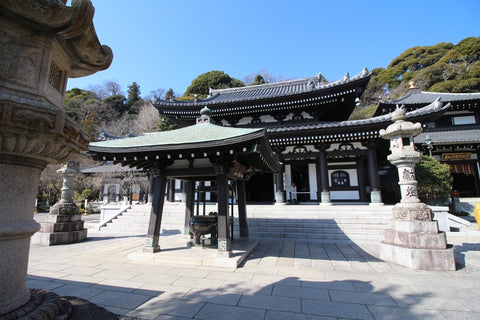
Exploring Kamakura's Shrines
A few of the 15 major shrines in Kamakura stand out from all of the others. We’ve created a shortlist of these must-visit places with information on why they’re so popular among tourists.
Meigetsu-in: The majority of the people who visit Meigetsu-in do so to view its famous hydrangea blossoms. They look especially stunning in June, when the rainy season is in full swing. You’ll also find a Japanese rock garden on the shrine’s grounds, a sight that’s only common in Kyoto. Meigetsu-in is dedicated to Rinzai Zen.

Sasuke Inari Shrine: This shrine has a fascinating history. According to legend, Minamoto Yoritomo once received a visit from an Inari (white fox). The creature advised the shogun on the perfect time to attack. Taking the advice, he secured victory for his troops. Minamoto Yoritomo built the shrine in the 12th century as a way to honor the Inari.

Zeniarai Benten: This shrine was built in honor of a Japanese water deity. It’s located in a cave that has a spring flowing through it. Many people believe that the waters from the spring have spiritual powers and can multiply money when they come into contact with them.
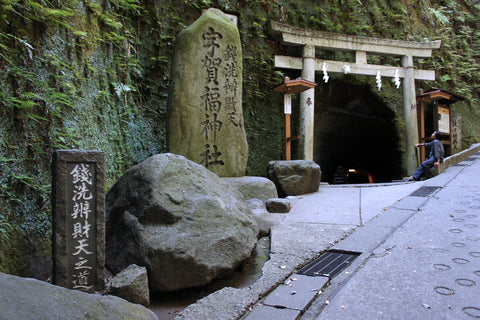
The Great Buddha of Kamakura
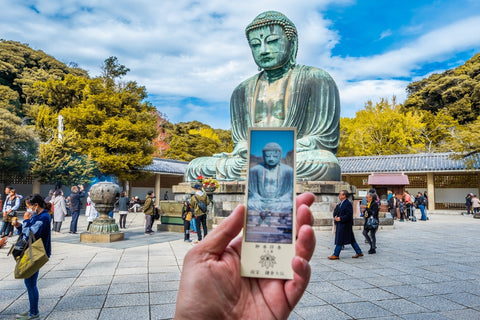
In this post, we mentioned the iconic Daibutsu, a Great Buddha statue that sits in the heart of Kotoku-in Temple in northern Kamakura. This is an Amida Buddha statue that was created in 1252. Standing (or, in this case, sitting) at 11.4 meters, it’s Japan’s second-tallest bronze Buddha statue. Only the Great Buddha of Nara in the Todaiji Temple is taller.
The Kamakura Daibutsu used to sit indoors until the destruction of the halls by natural disasters, including multiple typhoons, earthquakes, and one tsunami. During the 15th-century restoration, it was decided that keeping it outside was the better option. Since then, it has stayed out in the open, where people from all over the world come to see it. You can stand inside the bronze Buddha and reflect on the outside world. Beside the statue are two 1.8-meter straw sandals. These sandals were woven in 1951 by a group of children who hoped that the Buddha would use them to walk around Japan.
Enoshima Island Excursion:
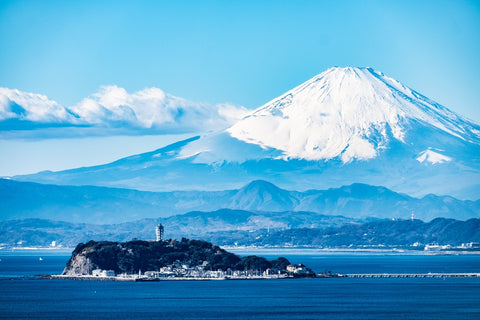
While exploring Kamakura, we recommend that you take a side trip to nearby Enoshima Island, where you can enjoy more stunning views, shrines, and beaches. The touristy Enoshima Island is only a short ride away from Kamakura via the Odakyu train network.
The island has its fair share of shrine buildings, which are collectively called the Enoshima Shrine. They’re located at different places around the island, but all of them are dedicated to Benten, a goddess of wealth, music, knowledge, and good fortune who many believe created the island. Enoshima boasts many popular beaches that are typically crowded with sunbathers, surfers, and swimmers.
Other main attractions include an aquarium, the Ryukoji Temple, the Samuel Cocking Garden, and the Sea Candle observation tower. Before you start exploring, it’s a good idea to get an Enoshima 1-Day combination ticket, which gives you access to most of the island’s main attractions.
Kamakura's Coastal Charms:

Facing the south side of the city lies a 7-kilometer-long coastline that houses 5 major beaches. The most popular is arguably Yuigahama Beach, a sandy beach with calm waves. Children and adults can enjoy swimming close to the shores. However, Yuigahama recently gained a reputation as a surfer’s beach. It even has a surfing school nearby where beginners can learn the basics.
Next to Yuigahama Beach lies Zaimokuza Beach. Together, they cover more than a kilometer of the coast line. Like Yuigahama, Zaimokuza is a haven for swimmers, sunbathers, and surfers. It also has a number of beach huts where visitors can enjoy shade, changing rooms, and food.
If you go west of Yuigahama, you’ll find Inamuragasaki Park. It’s a famous spot for sightseeing and enjoying scenic views of the ocean. You can even see Enoshima Island and Mt. Fuji on the western horizon. Inamuragasaki Park has been the location for many anime and Japanese TV dramas, including Our Little Sister, Our Lie in April, and Minami Kamakura High School Girls Cycling Club.
Kamakura's Artisanal Crafts:

You shouldn’t have any issues finding great souvenirs during your stay in Kamakura. The city has countless local artisans and traditional crafts, many of which incorporate Kamakura carving and are available in specialty stores and shops. The most popular traditional craft in the city is one that was imported from China during the Kamakura period. This artwork is called the Kamkura Bori. It is a unique type of lacquerware that has a smooth finish thanks to hand-carving the wood first. You can also buy pieces of Kamakura-style pottery, which uses incised designs and ornaments.
Shopping and Dining in Kamakura:
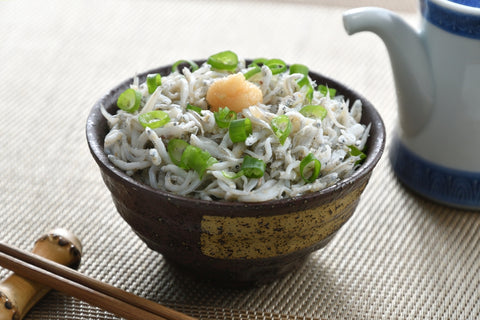
Looking for a good bargain or a sumptuous dinner? Kamakura is home to several shopping districts and traditional restaurants. Head over to Komachi Street, where you’ll find dozens of souvenir shops, trendy cafes, restaurants, and street food stalls. Feel free to shop for souvenirs and enjoy local delicacies such as shirasu (a white sardine dish) and korokke (Japanese croquettes). A trip to the Kamakura Farmers Market will give you access to the freshest vegetables in the city.
Seasonal Delights:

The scenic beauty of Kamakura changes with the seasons, so no matter when you visit, there’s always something stunning waiting for you. In spring, cherry blossoms are a must-see in every Japanese city, including Kamakura. Take a stroll along the Dankazura Path (near Tsurugaoka Hachiman shrine), which is lined with dozens of pink cherry blossom trees. You can also visit Genjiyama Park for a proper hanami (cherry blossom viewing) experience.
During the fall, see the changing colors of the autumn leaves at Engakuji Temple near Kita-Kamakura Station. In the summer, Meigetsu-in and Hasadera are the best places to be, thanks to their collections of hydrangeas.
Insider Tips for Kamakura:
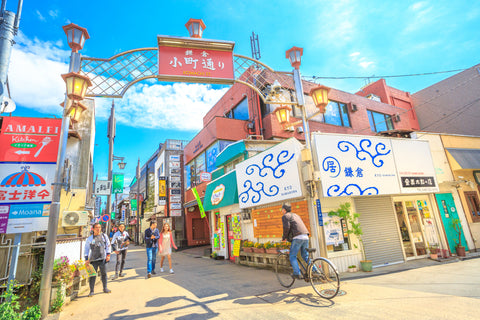
If you’re thinking about traveling to Kamakura, it’s best that you know what to expect. The best time to visit Kamakura is within the months of April to November, because of the good weather during that period. While in the city, try to visit the temples and shrines early in the morning, as most of them close before 5 p.m. You can find a private English tour guide by booking them on reliable websites, but many of the public tours cater to English-speakers. Navigating the city efficiently is possible thanks to the network of buses available. You can also get around the city on a bicycle, as there are several rental shops scattered around.
Conclusion:
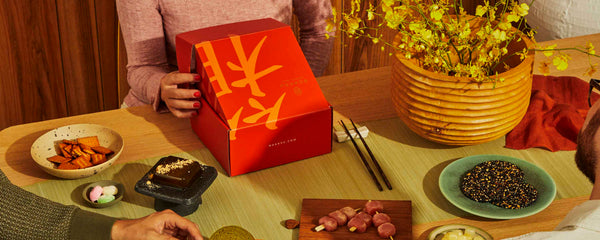
From ancient temples and shrines to beautiful beaches and coastal charms, you’ll never run out of places to go in Kamakura. We urge you to explore this historical gem during your visit to Japan. Before then, why not get used to the Japanese snacking culture with the help of Bokksu? We’re offering you a new mystery box of premium Japanese sweets and snacks every month.
All you need is a Bokksu Snack Box subscription and we’ll send these treats your way!
Author Bio







 Bokksu Snack Box
Bokksu Snack Box

























